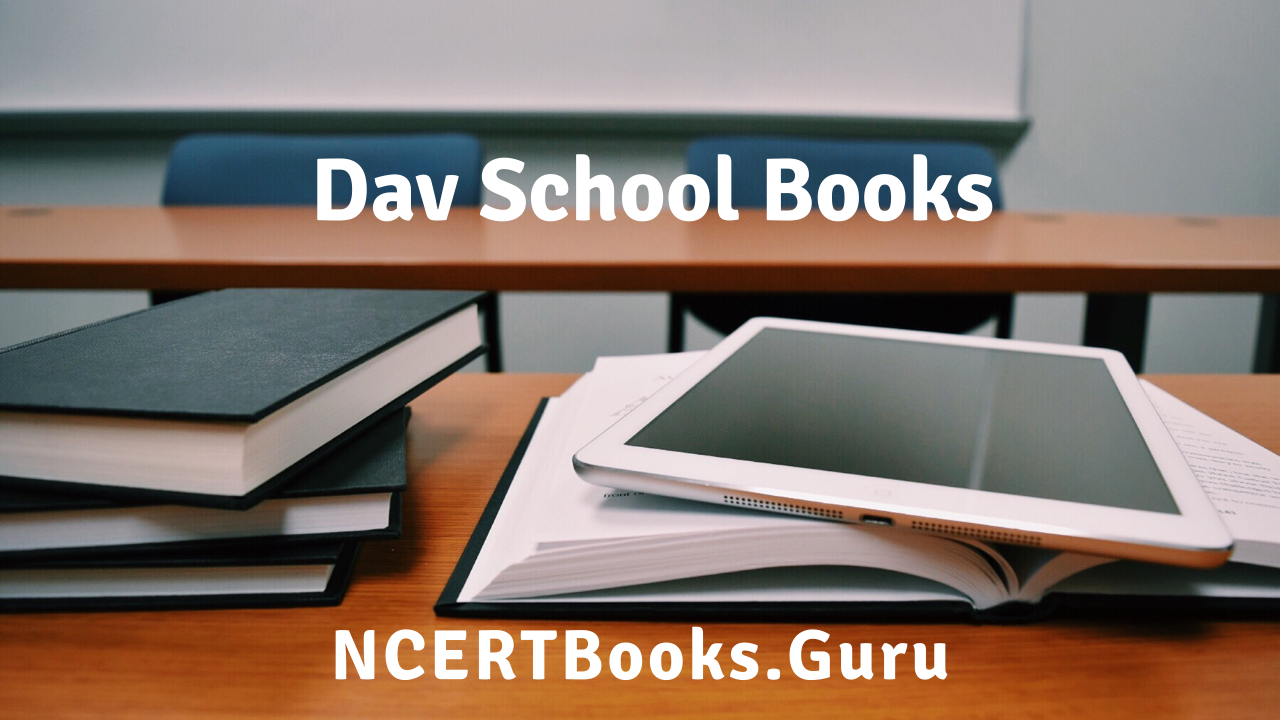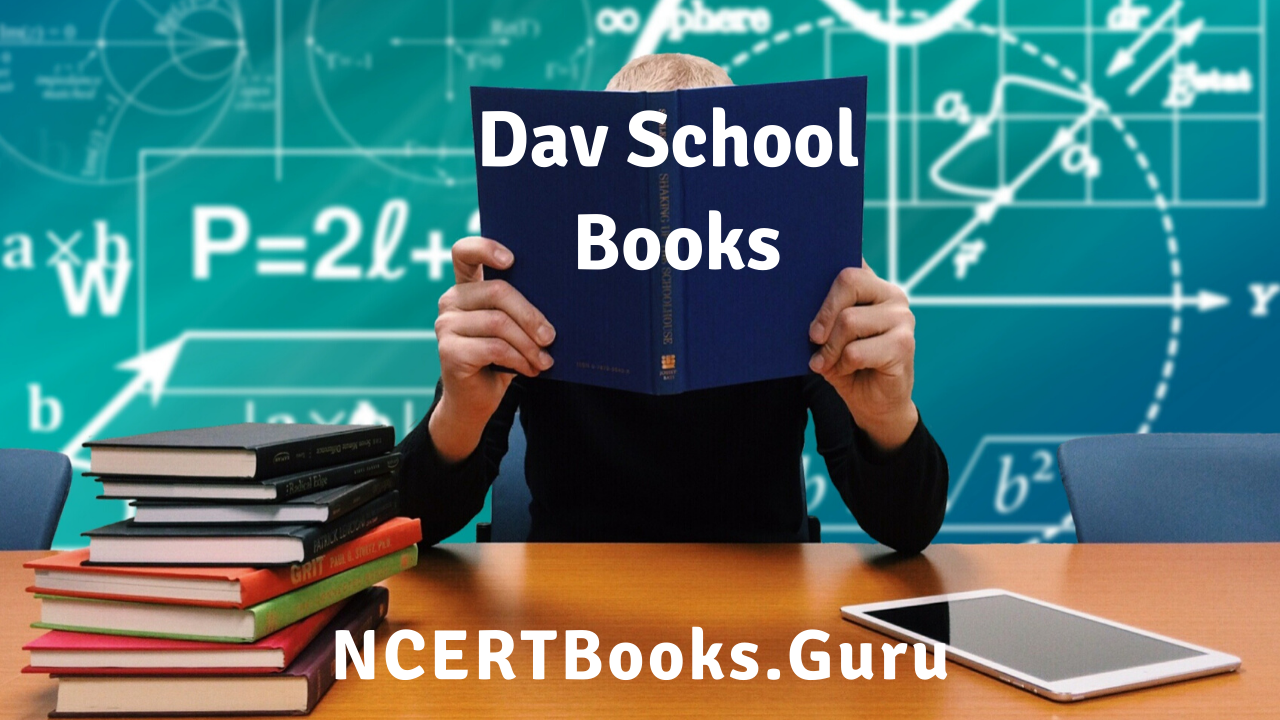Dav School Books: DAV Center for Academic Excellence is a full-fledged management committee department of DAV College. It was formed with the merger between the DAV Education Board, the DAV Institute of Education and the Research Institute, and the Academic Audit in December 2013.
The goal of fusing these units was to synchronize their efforts to maximize the availability of man, money, and resources. The Centre is dedicated to providing comprehensive academic support in DAV Schools in every corner of the country.
The Center also produces creative child-sensitive instructional resources for classes-LKG to VIII, including instructor manuals/guides, instructional kits, audio CDs, and multimedia CDs.
The Center also contributes to the design of evaluation content consisting of the Syllabus & Class VIII & XI Labeling Scheme, Question Papers, and Sample Papers according to the CBSE Directive. The assessment and reporting protocols, including checklists and composite cards for classes-pre-school to II, have also been set.
- Dav School Books Curriculum Guidelines
- History About Dav School Books
- Dav School Centre’s Goals
- 10 Lines on The Topic of Dav School Books
- What does “DAV” stand for?
- Who founded the school?
- When was DAV founded?
- Where will I find more information on DAV school books?
Dav School Books
The Center developed textbooks and workbooks in all fields and topics, from LKG to VIII schools. Books are interactive and structured to take the values and maxims of education into account. Every lesson is divided into engaging games and activities to make the process of teaching and training fun and child-centered.
Skills and idea creation are intertwined and slowly increasing. Notes are also provided for teachers on how to incorporate each idea, improve their skills, and learn to achieve the behavioral goals of the chapter.

Dav School Books Curriculum Guidelines
The Curriculum Guidelines for LKG to V have been drawn up by the DAV Center for Academic Excellence. It aims to give teachers a perspective on education from a dream, priorities and objectives, curricula, preparation plans, strategies, different games and activities, and assessment.
The most valuable aspect of the Curriculum Framework is that it illustrates in basic terms the “what,” “why” and “hows” of physical, mechanical, social, emotional, cultural, cognitive, creative and expressive arts, health and hygiene, nutritional and value education developmental fields. It provides teachers with insights into skills and principles that must be learned during the year throughout the curriculum transaction in children.
Competency and design goals are also explicitly defined. It also provides a wide range of games and activities to fit any area of development in line with an individual child’s growth rate, speed, and style.
Classroom teacher-learning methods and approaches for lesson preparation, courses, and donations are clearly defined.
The Curriculum Sub-Committee, consisting of curricula-developing experts from NCERT, CBSE, CIE, SCERT, DIET, DAV Principals, and practicing teachers from various DAV schools, has drawn up these Curriculum Guidelines.
History About Dav School Books
What Martin Luther (1483-1546) and John Calvin (1509-1564) were to the European Protestant Reformation, Swami Dayananda was to the 19th century Indian Renaissance. In 1875, nearly twenty-two years before Swami Vivekananda established the Ramakrishna Mission, he founded the first Arya Samaj at Bombay, and forty-seven years after Raja Rammohan Roy formed the Brahma Sabha which subsequently grew into Brahma Samaj.
Arya Samaj led to a revival of Vedic ideals condemning religious and social cruelty, from worship to superstition, the rigidity of the Castle to polygamy, child marriages, the exploitation of widows, Purda practices and the general gender disparity. As education is a tool for social change, he stressed the education of young men and women in art and life studies and technical competence so that their intellectual skills are broadened, their natural abilities are discovered, and the virtue is cultivated.
The Arya Samai stirred the Punjab and portions of northern and western India with its social commitment, charitable work, nationalist involvement, and sense of pride in the Vedic heritage. At the same time, the Brahma Samaj ignited the chisel of social change in Bengal, under Raja Ram Hohan Roy.
It became imperative that after the demise of Swami Dayananda (October 30, 1883) his legacy was not be preserved by building a memorial, but by education, to remove social orthodoxy, following Arya Samaj’s eighth commandment, which states: ‘We ought to dissipate ignorance and promote knowledge.’
On June 1 of 1886, at Lahore, the first high school of DAV was set up with its headmaster, Lala Hans Raj (1864-1938). Hans Raj was honest, kind, highly knowledgeable, and a futurist, which led him to be known as Mahatma
He worked without any pay with missionary zeal.
The school became a college according to DAV management Decision No. 3 of April 28, 1888, and Hans Raj became its first principal. In the first session, what started as a small educational undertaking with only 505 students has become very significant. DAV spread in almost all areas of the country, except Kerala, in its 125th anniversary, into the rural, industrial, semi-urban, slum and tribal areas.
Its network includes 715 institutes (state-assisted, public, model, international and non-formal), art schools, science, law, education, agriculture, technology, and engineering, business, administration, medical and paramedical institutions relating to Ayurveda, dentistry, health, and nursing; a Vedic Research Institute (Hoshiarpur) and the recently established Jalhandar-based University.
He founded the Maharashtra Heritage Preservation Center and Center for the Promotion of Classical Sanskrit and Modi and Brahmi Scripts at Solapur. He built a historical museum to link students to their cultural past.
Dav School Centre’s Goals
- The Center aims to provide continuous assistance to DAV Schools to achieve excellence by providing children with a comprehensive education.
- Template for all DAV Institutions curriculum guides, instructor manuals, textbooks, audio-visual aids, and other need-based instructional resources for Classes-LKG to VIII.
- Creation of assessment materials (question papers) for Classes-VIII & XI according to CBSE guidelines and CBSE Checklists and Cumulative Cards-LKG to II.
- Assessment of strengths and quality shortfalls in DAV Public / Model Schools by academic auditing.
- Developing in-service training programs for DAV task force capacity building.
See More:
10 Lines on The Topic of Dav School Books
To achieve the desired goal of promoting excellence in DAV Institutions, the objectives envisaged by the Centre are:
- To revise the already designed DAV textbooks, curriculum guidelines, and allied instructional materials.
- To write new books and create new instructional materials.
- To develop evaluation material comprising question papers, marking scheme for Class-VIII and XI as per the guidelines given by CBSE.
- To revise the already designed Evaluation and Reporting Guidelines for Classes-Pre-School to II.
- To create a group of ethical and competent principles and teachers in all DAV schools.
- To analyze and collate the reports of the audit team and grade the institutions accordingly.
- Development of Regional Training Centres for the training of teachers and non-academic staff.
- Development of a need-based in-service training module for DAV Schools.
- Development of In-service training programs of long and short durations for various levels of DAV Principals, teachers, and non -academic staff.
- To groom in-house master trainers for planning, designing, and conducting training at the regional level.
FAQ’s On Dav School Books
Question 1.
What does “DAV” stand for?
Answer:
“DAV” stands for “Dayanand Anglo-Vedic School.
Question 2.
Who founded the school?
Answer:
Lala Hans Raj founded the first DAV high school.
Question 3.
When was DAV founded?
Answer:
It was founded on June 1, 1886, in Lahore.
Question 4.
Where will I find more information on DAV school books?
Answer:
More information can be found on the official website of the DAV Education Board.
